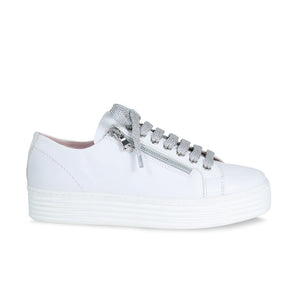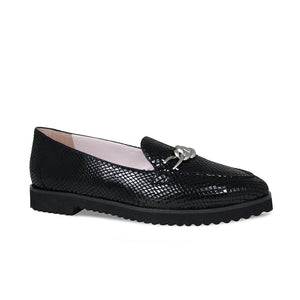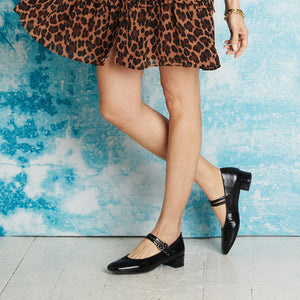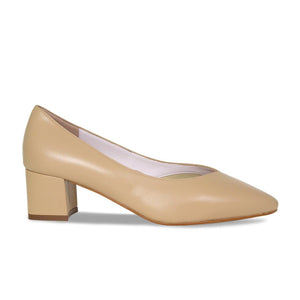
If your heels are aching and you're unsure why, you might be dealing with Heel Fat Pad Syndrome (HFPS) – a common but often overlooked condition, also referred to as heel fat pad atrophy. Many people suffer in silence without the correct diagnosis of heel fat pad syndrome, which can significantly impact their daily lives. Understanding HFPS is the first step towards relief.
In this article, we’ll explore what heel fat pad syndrome or heel fat pad atrophy is, the key causes and symptoms to watch out for, and how you can manage the condition with the right footwear and home remedies. We will show you some of the best trainers for heel pain and shoes with built in arch support.

What is Heel Fat Pad Syndrome?
Heel Fat Pad Syndrome is a relatively under-researched condition, with many people unaware of its existence, despite suffering with tender heel pads or pain on the bottom of the heel pad.
It is the second most common cause of heel pain after plantar fasciitis, an inflammation of the fibrous tissue (plantar fascia) along the bottom of your foot. To understand HFPS, it's essential to know that the foot fat pad is a honeycombed structure in the heel, acting as a natural cushion between the skin and the heel bone.
In individuals with heel fat pad syndrome, this cushioning layer – known as the heel fat pad – becomes compromised. As a result, the heel loses its ability to effectively absorb shock and provide the necessary support for the foot.

What are the Symptoms of Heel Fat Pad Syndrome?
According to the NHS, common symptoms of heel fat pad syndrome include a gradual, dull, achy pain under the centre of the heel, often worsening during periods of standing, walking, or engaging in high-impact activities.
You may also notice a swollen heel pad, making it uncomfortable to wear shoes, and some people may also experience tenderness or warmth when touching the heel. In some cases, the pain on the bottom of the heel pad can persist even at night or during rest, further affecting daily comfort and mobility. Ouch indeed!
If you're dealing with these symptoms of painful heel pads or swollen heel pads, it's important to seek advice from a healthcare professional for proper diagnosis and treatment.
What are the Causes of Heel Fat Pad Syndrome?
There are several reasons why a person may develop HFPS. Essentially, the condition is caused by the thinning or degeneration of the fat pad at the heel of your foot and is typically a result of repeated use. The NHS has also suggested other contributing factors that may play a part in getting heel fat pad syndrome, such as:
- Being overweight – Excess weight increases pressure on the heel with every step, causing the fat pad to wear down more quickly over time.
- Age – As we age, the natural fat padding under the heel tends to thin, reducing its ability to cushion and absorb impact.
- Wearing inappropriate, unsupportive footwear – Footwear lacking proper support and cushioning can cause excessive strain on the tender heel pad, leading to faster degeneration. We recommend wearing shoes with built in arch support and heel support. Check out of trainers with heel support here!
- Spending long periods standing or walking, especially with a sudden increase in these activities – Prolonged standing or walking, particularly without adequate preparation, can put repeated stress on the heel, contributing to the breakdown of the fat pad.
- Diabetes – Diabetes can damage nerves and blood vessels, weakening the fat pad structure and increasing the risk of HFPS.
- Inflammatory conditions (e.g., rheumatoid arthritis, psoriatic arthritis) – Inflammatory conditions can weaken the structures around the heel, leading to deterioration of the foot fat pad and causing additional heel pad pain.
- Weakness in the muscles within your feet or legs – Muscle weakness can alter the way weight is distributed across your feet, placing more pressure on the heel and contributing to foot fat pad degeneration.
- Tightness of the muscles in the backs of your legs – Tight calf muscles can change the way you walk, placing additional strain on the heel and leading to quicker breakdown of the foot fat pad.
- Not allowing adequate recovery time between activities – Insufficient rest between high-impact activities can prevent the heel fat pad from recovering, accelerating its wear.
- Prolonged use of oral corticosteroids – Long-term use of corticosteroids – anti-inflammatory medications that mimic natural hormones to reduce inflammation and suppress the immune system – can weaken the connective tissues in your body. This can potentially affect the foot fat pad, making it more prone to foot padding degeneration.

Heel Fat Pad Syndrome vs. Plantar Fasciitis
Now that we’ve explained heel fat pad syndrome, you may be wondering what makes it different from plantar fasciitis. Like HFPS, plantar fasciitis causes pain on the bottom of the foot, around the heel and arch. However, there are some key differences to consider before self-diagnosing:
- Cause – Heel Fat Pad Syndrome is caused by the degeneration or thinning of the heel fat pad, often due to overuse and repeated impact. In contrast, plantar fasciitis results from inflammation of the plantar fascia ligament, usually caused by overstretching or overuse.
- Location of pain – The pain from HFPS is located directly under the heel, while plantar fasciitis causes pain along the arch of the foot as well as near the heel.
- Type of pain – People with HFPS often experience a dull, aching pain that may worsen with activity. The pain is triggered by prolonged standing, walking, or high-impact activities. Those with plantar fasciitis typically suffer from sharp, stabbing pain, especially with the first steps in the morning. This pain is often triggered by standing after rest, walking after inactivity, or prolonged standing.
- Symptoms – If you have HFPS, you’ll likely feel tenderness, swelling, and warmth in the heel area, whereas with plantar fasciitis, you may feel tightness in the arch, with pain that improves after some movement.
- Treatment – We recommend visiting your GP or podiatrist for the best available treatment. However, for short-term relief, HFPS can be managed with rest, cushioned footwear, heel pads, and physical therapy. For plantar fasciitis, stretching exercises and supportive footwear are recommended.

Prevention and How to Alleviate Heel Fat Pad Syndrome
We’ve dug into the NHS archives to find the safest and most recommended home treatments to help alleviate HFPS. Unfortunately, there is no quick or easy fix, and these tips will not instantly get rid of your symptoms. However, there are several home remedies and lifestyle changes that can make a difference:
- Rest and elevate your foot on a stool whenever possible.
- Apply an ice pack (or a bag of frozen peas) wrapped in a towel to the painful area for up to 20 minutes every 2 to 3 hours.
- Choose shoes with cushioned heels and proper arch support.
- Consider using insoles or heel pads in your shoes.
- Incorporate regular stretching and foot exercises into your routine.
- Opt for non-weight-bearing exercises, like swimming.
- Aim to lose weight if you are overweight or obese.
Things to avoid:
- Limit walking or standing for extended periods.
- Refrain from wearing high heels or narrow, pointy shoes.
- Steer clear of flip-flops or backless slippers.
- Avoid walking barefoot on hard floors.

The Best Shoes for Heel Fat Pad Syndrome
For those living with HFPS, buying the correct shoes is essential to lessen symptoms and aid recovery. On your footwear checklist should be extra cushioning, support, and shock absorption to reduce pressure on the heel. This is where we – Sole Bliss – come in.
Our shoes are not only stylish and versatile, but they are specially designed for those with foot conditions such as heel fat pad syndrome. Thanks to our award-winning technology, our shoes feature cushioned insoles and generous cushioning in the heel area to provide extra support and reduce pressure on the fat pad.
Our diverse collection of shoes for heel fat pad syndrome is also made with wide toe boxes to ensure comfort without sacrificing style, providing an excellent choice for those who need both foot support and fashionable footwear.


 USA
USA




















